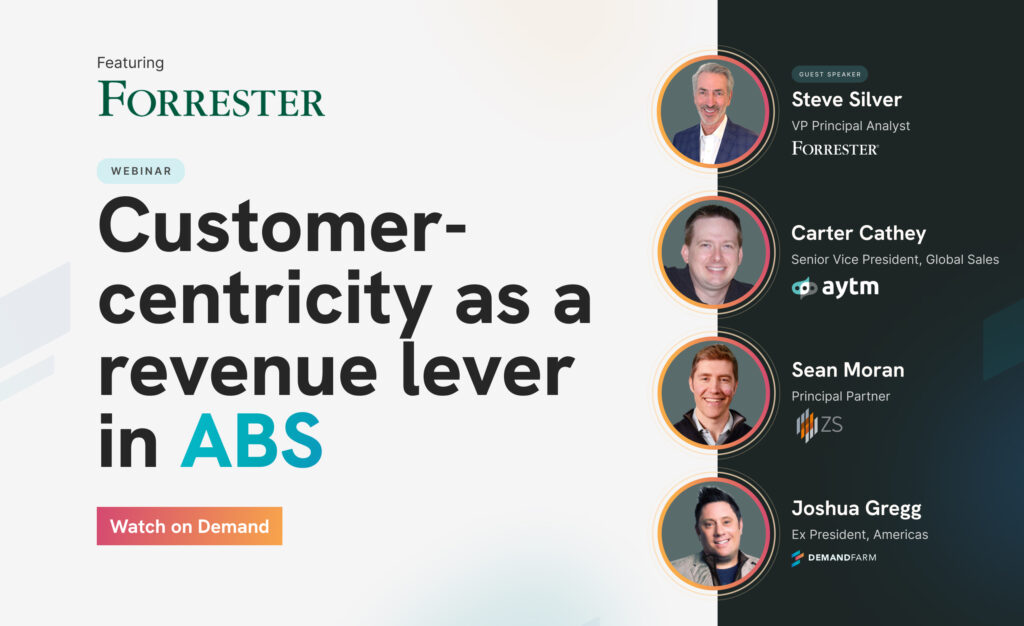RevOps Best Practices: An Ultimate Guide for Revenue Growth in 2025

“The leads shared by marketing this month is a gold mine!” — said no sales leader, ever. “Sales team made the most of the leads this month,” said no CMO, ever. “We know the entire journey of this customer, thanks to sales and marketing,” said no customer success manager, ever. The traditional silos between marketing, sales, and customer success is a recipe for disaster. It’s like a three-legged race where everyone’s pulling in different directions. No wonder so many leads fall through the cracks, leaving customers feeling unheard and ultimately hurting the revenue expectations. This is where Revenue Operations (RevOps) comes in—a framework turned function that unifies all revenue-generating teams under a shared set of goals, metrics, and tools. Organizations that invest in RevOps report a 30% reduction in go-to-market expenses. This cost-saving benefit is achieved by streamlining processes and eliminating inefficiencies, allowing marketing teams to allocate resources more effectively RevOps is more than just a framework—it’s the backbone of transformative business strategies like Account-Based Marketing (ABM), Product-Led Growth (PLG), and advanced sales enablement. Let’s explore how RevOps impacts these areas, why it matters for Key Account Managers (KAMs), and the best practices for success in 2025. Why is RevOps Valuable for Marketing? Companies that integrate their sales and marketing teams through RevOps experience 208% more revenue from marketing efforts. Often, marketing effectiveness suffers due to misalignment with sales or customer success. RevOps provides marketing with better insights into lead conversion and customer retention, enabling a focus on high-quality leads and targeted campaigns. Case Study Example: Consider a B2B tech company that adopts RevOps and integrates its CRM system across departments. With access to sales data, marketing can identify which campaigns produce high-converting leads. Over six months, marketing improves lead quality by 20%, resulting in a more efficient sales process and seamless handoff to customer success. Additionally, RevOps helps map out upsell and cross-sell opportunities, breaking down data silos. For instance, using tools like Relationship Maps or Org Chart, marketing can run targeted campaigns based on insights from account managers, ensuring alignment in outreach efforts. Why is RevOps Valuable for Key Account Managers? For Key Account Managers, RevOps is critical as it aligns strategy with execution. Key accounts often contribute significantly to revenue, making real-time insights into customer health, segmentation, and engagement vital. RevOps empowers KAMs through: ABM Strategies: Integrating tools like Org Chart ensures that targeted campaigns reach the right stakeholders within key accounts. Account Health Scoring: Predictive analytics help identify at-risk accounts, allowing proactive retention strategies. Sales Enablement: Automated workflows equip KAMs with resources—presentations, case studies, demos—at every stage of the account lifecycle. AI-Powered Tools in RevOps Integrating AI into RevOps enhances efficiency and decision-making. Here’s how: Whitespace Identification: AI ranks leads by conversion likelihood, helping KAMs focus on high-potential accounts and uncover untapped opportunities. Predictive Analytics: AI forecasts account growth and churn, empowering teams to take proactive action. Customer Segmentation: By clustering customers based on behaviors and preferences, AI helps tailor strategies for maximum impact. Imagine AI identifying a decision-maker’s influence within a key account, enabling AMs to craft a personalized value proposition. This data-driven precision reduces time spent on low-priority leads and maximizes strategic outcomes. This helps marketing better align with the full customer journey, making their efforts more efficient and impactful. RevOps Implementation – 5 Best Practices Implementing RevOps effectively requires strategic goals, the right technology, and continuous improvement. Here are five core practices for successful RevOps implementation: 1. Set Unified, Measurable Goals All revenue teams must focus on shared goals. Create key performance indicators (KPIs) that reflect the full customer lifecycle, such as customer acquisition cost (CAC), customer lifetime value (LTV), and churn rate. Example: A SaaS company with a RevOps strategy sets a unified KPI to reduce customer churn. Marketing focuses on leads aligned with long-term needs, sales emphasizes transparency, and customer success improves onboarding, resulting in a 20% reduction in churn. 2. Build a Connected Tech Stack Your technology stack is crucial for RevOps. Ensure tools integrate seamlessly to allow data sharing and tracking of progress toward common goals. This may involve adopting a CRM that supports all departments or implementing marketing automation software. Example: A retail company unifies their CRM with marketing automation tools, tracking customer journeys and cutting data discrepancies by 30%, leading to a 15% increase in customer loyalty. 3. Foster Cross-Functional Communication Regular communication between teams is essential. Establish bi-weekly meetings to share insights and create a feedback loop that continuously improves processes. Example: A manufacturing company using RevOps sees a 15% increase in conversions through improved marketing strategies based on insights gained from these meetings. 4. Regularly Assess and Optimize RevOps is a continuously evolving strategy. Regularly assess processes, KPIs, and customer feedback to adapt to market changes and improve efficiency. Example: A healthcare company identifies onboarding pain points through quarterly reviews, leading to a 10% increase in customer satisfaction and a 25% reduction in onboarding time. 5. Leverage Data and Analytics Utilize data analytics to gain insights into customer behavior and market trends, enabling informed decision-making. Example: A tech startup identifies a sales funnel drop-off point through data analytics, addressing it to achieve an 18% increase in conversion rates over three months. How Can This Implementation Benefit You? Implementing RevOps fosters alignment and yields significant benefits: Increased Revenue and Efficiency: Aligning teams creates smoother transitions between lead generation, sales, and customer retention. Better Customer Experience: When teams share data, customers receive a consistent, high-quality experience. Data-Driven Decision-Making: A comprehensive view of the customer journey allows for informed strategic decisions. Enhanced Collaboration and Culture: RevOps promotes a culture of collaboration and accountability, motivating teams to contribute to shared goals. Conclusion Revenue Operations (RevOps) is essential for businesses aiming to align teams, streamline processes, and optimize revenue potential. By integrating marketing, sales, and customer success under a unified RevOps model, organizations can break down silos, increase efficiency, and enhance the customer experience. As we approach 2025, companies adopting RevOps best practices—such as setting unified goals, building a
The Ultimate Guide to Build a Top Performing Key Account Management Team from Scratch

Do you know how the top key account managers (KAMs) become the top KAMs? They don’t just respond to an account’s needs—they anticipate them, creating proactive strategies that build trust and deepen relationships. Getting there requires more than assuming the role. Top KAMs work proactively to add ongoing value, evolving customer relationships into growth drivers and ensuring account success is always a step ahead. This isn’t just customer service; it’s about aligning with each client’s long-term goals and success trajectory. Key Focus Areas for High-Impact Account Management Teams 1. Strategic Growth Planning Rather than simply upselling, effective account managers create growth plans tailored to each client’s business structure, strategically aligning with both current needs and future potential. This insight-driven approach uncovers opportunities that might go unnoticed, turning account management into a proactive rather than reactive process. 2. Long-term Partnership Building Great account management transcends the transactional. Shifting to value-driven engagements and shared objectives, account managers foster genuine partnerships that build resilience and loyalty over time. Why Investing in Key Account Management Matters Retaining an existing customer costs five to seven times less than acquiring a new one. Yet many companies overlook the potential within their existing client base. By strengthening these relationships, account management teams directly impact retention and reduce churn, transforming client satisfaction into a growth strategy. Core Traits of High-Performing Account Managers 1.Relationship Intelligence and Stakeholder Knowledge The best account managers know business is personal. They create trust-based connections by mapping out and understanding key stakeholders, tracking team shifts, and staying updated on client organization changes. Example: Leading tools such as DemandFarm help map organizational charts, enabling KAMs to see the internal dynamics of client organizations, identify new stakeholders, and adapt their approach to fit evolving structures. 2. Data-Driven Decision-Making Effective KAMs use data to stay one step ahead. Monitoring client interactions, usage patterns, and support history allows them to anticipate needs, spot potential issues early, and recognize expansion opportunities. Insight: Predictive analytics help identify clients who are likely to renew or expand, letting account managers take proactive steps to strengthen these accounts before renewal cycles. 3.Cross-Functional Collaboration High-performing KAMs bridge teams, coordinating with sales, customer success, and product development to holistically tailor solutions that address client goals. This collaborative approach drives timely adjustments and bespoke solutions, aligning company offerings with client growth strategies. Key Account Manager Performance Report Card Here’s a guide to evaluating KAMs based on key criteria for success: Hiring Skill Assessment: Are they strategic thinkers with strong relationship intelligence? Cultural Fit: Do they understand the importance of stakeholder alignment, including champions and detractors, within each client organization? Monitoring Progress against KPIs Growth Planning: Do they proactively work with economic decision makers to co-create value-driven growth plans? Relationship Health: Are they actively tracking and improving relationships across client stakeholders, using tools like DemandFarm’s org chart and relationship scoring? Pruning Performance Monitoring: Are they identifying accounts that may no longer align with strategic objectives, or addressing detractors effectively? Review Features: Use DemandFarm’s relationship scoring to evaluate relationship health, identifying accounts that may require intervention or reallocation of resources. FREE Performance Report Card for Key Account Managers Category Criteria Rating (1-5) Comments / Examples 1. Account Understanding In-depth knowledge of account’s business, industry, and pain points Identification of key stakeholders (champions, economic decision-makers, detractors) Regular updates on account’s organizational changes 2. Relationship Health Strength of relationships with stakeholders Proactive handling of detractors and opposing stances Level of trust built with champions 3. Strategic Planning Account-specific growth strategy alignment with account goals Collaboration with economic decision makers on long-term objectives Responsiveness to shifts in account strategy 4. Value Creation Frequency of value-driven interactions beyond basic account needs Use of data to identify opportunities for account growth Tailoring solutions to specific account objectives 5. Cross-Functional Collaboration Coordination with internal teams (sales, customer success, product) Effective communication of account needs internally Engagement in cross-functional problem-solving 6. Responsiveness & Monitoring Proactive monitoring of relationship health Timely action on account issues or feedback Utilization of analytics to anticipate and address risks 7. Knowledge Management Comprehensive documentation of account interactions Accessing and contributing to shared account intelligence Succession planning for account continuity 8. Continuous Improvement Regular self-assessment and performance reflection Seeking feedback from accounts and internal stakeholders Setting actionable goals based on past performance Scoring Guide: 1-2: Needs Improvement 3-4: Meeting Expectations 5: Exceeding Expectations Key Skills for Account Management Success Strategic Thinking – Account managers need to understand where their client’s business fits within the market and act as advisors on both operational and strategic levels. Emotional Intelligence (EQ) – Building strong relationships requires empathy and adaptability. Account managers who tailor their interactions based on individual personalities and pain points are better positioned to foster long-lasting partnerships. Organizational Skills – With multiple accounts in play, high-performing account managers rely on tools like Trello or Asana to keep track of tasks, goals, and timelines. This organization is essential for maintaining responsiveness and meeting client expectations. Structuring Account Management Teams for Maximum Impact Segmenting accounts by strategic value helps allocate resources effectively. High-touch accounts benefit from dedicated attention, while low-touch accounts require regular but less intensive interactions. Example of Segmentation: High-Touch Accounts: Personalized service, in-depth strategic planning, and frequent touchpoints with senior account managers. Low-Touch Accounts: Regular check-ins and performance updates managed by junior team members. Using CRM systems like Salesforce helps track account segmentation, allowing managers to deliver tailored service levels that meet specific client needs. Building Account Management Processes for Efficiency Standardized, scalable processes are essential for high-performing account management teams: Service-Level Agreements (SLAs): Set clear expectations for response times, which provide consistency and reliability to clients. Escalation Protocols: Quick resolutions for complex issues, giving clients confidence in a responsive support structure. Leveraging DemandFarm for Strategic Account Management DemandFarm offers tools that complement high-impact account management strategies without imposing. Here’s how DemandFarm subtly integrates into the process: Organizational Mapping: DemandFarm’s org charts allow account managers to see beyond titles, capturing team structures and key relationships within client organizations. This visibility fosters
SPIFFs: A Sales Leader’s Guide to Strategic Incentives

Moving the needle on key metrics often requires more than just quotas and commissions. Many organizations struggle to keep their sales teams consistently motivated, especially when they need to push specific products or meet urgent targets. This is where SPIFFs—short-term sales performance incentives—come into play. But why are SPIFFs so effective? 75% of sales leaders say they drive results when implemented strategically. SPIFFs can be a game-changer when applied in targeted bursts, offering quick wins for both individual salespeople and the organization. This guide will explain SPIFFs and show you how to design programs that motivate, boost focus, and achieve measurable outcomes in a way that resonates with your sales force. What Exactly Is a SPIFF in Sales? A SPIFF (Sales Performance Incentive Fund) is a short-term financial reward designed to motivate salespeople to hit specific, time-sensitive goals. Unlike long-term incentives like commissions, SPIFFs offer immediate rewards for actions taken within a set period, creating urgency and focus. For example, imagine your team has to push a new software feature. You could introduce a SPIFF offering a $200 bonus to any rep who closes five deals in two weeks that include the new feature. The clear goal and financial reward direct their focus, boosting results where it matters most. SPIFFs are usually monetary, but they can also involve non-cash rewards like trips, gift cards, or experiential incentives (think “weekend getaway”). They are flexible and can be used to target underperforming products, boost morale, or drive attention to specific initiatives. Read more: Complete Guide on Sales Methodologies to Win Large Deals Benefits of SPIFFs: More Than Just Cash Rewards Sales leaders often ask, “Is it worth investing in SPIFFs?” The data suggests a resounding yes—research shows that SPIFFs can boost short-term sales by 22% when used effectively. Below are the key benefits that make SPIFFs such a powerful tool. Immediate Results When the clock is ticking on quarterly targets or underperforming products, SPIFFs offer an instant surge in focus. A well-timed SPIFF can provide the energy needed to close the gap between “almost hitting” and “crushing” your sales goals. Example: A tech company could offer a $100 bonus for every additional software seat sold in the last two weeks of Q4. The sense of urgency ensures attention is laser-focused on closing those deals. Align Focus with Business Priorities Need to move inventory? Struggling with a new product launch? SPIFFs drive attention toward specific initiatives, ensuring your team prioritizes what’s most critical. SPIFFs can be the key to re-energizing underperforming sales or helping push through tight deadlines. Boost Morale and Competition Healthy competition among salespeople can be invigorating, especially when SPIFFs are on the line. It adds a sense of excitement and urgency that standard quotas or commissions might not provide. Tailored for Flexibility SPIFFs can be as broad or as narrow as needed. They’re ideal for encouraging the sale of new products, pushing seasonal campaigns, or focusing on high-margin items. The beauty lies in their flexibility to address immediate business needs. Motivation in Sales: Why SPIFFs Work Motivation in sales can be volatile. A consistent, long-term incentive plan like commissions keeps teams engaged over time, but salespeople need something more when it comes to immediate action. That’s where SPIFFs excel—they provide immediate rewards, generating the urgency that drives short-term effort. An analogy that might help: if commissions are the steady beat in a marathon, SPIFFs are the final sprint. They motivate salespeople to push extra hard when it’s needed most, whether to hit a monthly quota or boost the performance of a lagging product. It’s no wonder that sales teams see an average of a 22% boost in short-term sales when SPIFFs are deployed strategically. Designing a High-Impact SPIFF Program Creating a SPIFF that truly motivates and delivers results needs to be more than just an afterthought. Let’s break down how to design an impactful program: Set Measurable, Specific Goals Define clear outcomes you want to achieve. Are you trying to increase sales volume, drive attention to a new product, or move through excess inventory? The goal should be laser-focused and easy to measure so that your sales team understands what’s required and management can track success. Example: Instead of saying, “Increase new product sales,” aim for, “Sell 100 units of Product X by the end of the month.” Choose the Right Incentive Cash is the most common reward in SPIFFs, but it’s not always the most effective. Some salespeople are motivated more by experiences or time off than money. Know your team—do they light up on an all-expenses-paid weekend getaway, or is a financial bonus the quickest way to their hearts? Example: A company may offer a weekend vacation for the salesperson who closes 20 deals by the end of the month, appealing to those who value experiences over cash. Time-Bound for Urgency SPIFFs thrive on urgency, so they should always be tied to a specific time frame—typically one to four weeks. A SPIFF that runs too long loses its sense of urgency, diminishing its impact. Example: A two-week SPIFF offering $50 per sale of a particular product can drive immediate focus and action in an achievable way. Communicate Clearly and Frequently Your sales team needs to know exactly how they can win when the SPIFF starts and ends, and how they’ll be rewarded. Kick off your SPIFF program with a team meeting and follow up with regular updates. Example: Send weekly performance summaries showing how close each salesperson is to earning their SPIFF reward. This keeps the competition alive and excitement levels high. Track Performance and Celebrate Wins Keeping momentum high during the SPIFF is crucial. Recognizing effort and progress along the way—not just at the end—keeps your sales team engaged and builds a healthy sense of competition. Example: Shout out top performers in team meetings or email updates to encourage others to stay motivated. Tailoring SPIFFs to Different Sales Roles SPIFFs aren’t one-size-fits-all. Customizing them to fit the roles and responsibilities of your team can amplify their
An Introduction to Enterprise Sales for Key Account Managers

A multinational software company might spend nearly a year negotiating a $5 million deal with a Fortune 500 company. This process involves multiple product demonstrations, engaging with IT, procurement, and finance stakeholders, and significant customization to meet the client’s needs. Ultimately, the software company signs a long-term deal that will generate millions in revenue. Enterprise sales are characterized by growing competition, more complex buyer journeys, and increased sales cycle times by over 50%. Closing high-value agreements exceeding $250,000 typically requires at least six months of strategic planning and execution. In this guide, we’ll delve into the intricacies of enterprise sales, their importance, key stages, and the metrics that will help you optimize your strategy as a key account manager. What is Enterprise Sales? Enterprise sales involve selling goods or services to large businesses or organizations, often resulting in long-term, high-value contracts. Compared to small or mid-sized business (SMB) sales, enterprise sales typically entail a longer decision-making process, more resources, and more stakeholders. Longer Decision-Making Process: Enterprise sales often require extensive negotiations and multiple rounds of discussions. High-Value Contracts: Deals can be significantly larger, with contracts potentially worth millions of dollars. Multiple Stakeholders: Various departments and individuals within the organization need to be engaged and convinced. Enterprise sales require a strategic account penetration approach, where the sales team must build relationships with multiple key stakeholders to influence the overall decision-makers. Due to the complexity of the process, the sales team must ensure that their solution aligns with the enterprise’s broader needs and strategic goals. Key Stages of Enterprise Sales Identifying High-Value Opportunities: Research and identify potential enterprise clients with a clear need for your product or service. Analyze the client’s industry, market position, and growth plans to tailor your offering. Building Relationships: Engage with multiple stakeholders within the enterprise, including decision-makers, influencers, and end-users. Understand the unique challenges and objectives of each stakeholder group. Customizing Solutions: Develop a customized solution that addresses the specific needs and pain points of the enterprise. Highlight the long-term value and ROI of your offering. Negotiating and Closing: Navigate the complex negotiation process, addressing concerns and objections from various stakeholders. Secure a long-term contract that benefits both parties and aligns with the enterprise’s strategic goals. Metrics for Optimizing Enterprise Sales Strategy Sales Cycle Length: Monitor the time taken to close deals and identify bottlenecks in the sales process. Customer Acquisition Cost (CAC): Calculate the cost of acquiring new enterprise clients and compare it to the lifetime value (LTV) of the client. Conversion Rate: Track the percentage of enterprise opportunities that result in closed deals. Customer Satisfaction: Measure client satisfaction post-sale to ensure long-term retention and potential for upselling. Actionable Insights for Key Account Managers Focus on Strategic Alignment: Align your sales strategy with the enterprise’s long-term goals and initiatives. Demonstrate how your product or service can drive their strategic objectives. Leverage Data and Analytics: Use data and analytics to understand the enterprise’s needs and tailor your offering accordingly. Provide data-driven insights to support your value proposition. Build Strong Relationships: Invest time in building strong, trust-based relationships with key stakeholders. Understand their individual challenges and how your solution can address them. Customize Your Approach: Avoid a one-size-fits-all approach. Customize your sales strategy, product demos, and proposals to fit the enterprise’s specific needs. By understanding the nuances of enterprise sales and implementing these actionable insights, key account managers can optimize their strategies, close high-value deals, and build lasting relationships with enterprise clients. Importance of Enterprise Sales Enterprise sales are crucial for expanding and scaling businesses that offer expensive or sophisticated goods. Beyond the immediate revenue boost, several other advantages make enterprise sales a strategic priority for key account managers. Greater Revenue Opportunities High-Value Transactions: Enterprise sales typically involve significantly higher transaction values than SMB sales. This allows companies to substantially increase their revenue from a few contracts. Strategic Expansion: Companies like HubSpot have reported a significant boost in revenue after focusing on enterprise clients, demonstrating the potential for rapid growth. Long-Term Client Relationships Enduring Partnerships: Enterprise sales often result in long-lasting relationships. Once a product or service is integrated into a major organization’s infrastructure, it becomes less likely to be replaced due to the high cost and lengthy onboarding process of switching. Increased Retention: This leads to higher client retention rates, providing a stable and recurring revenue stream. Brand Recognition and Market Credibility Enhanced Credibility: Closing business partnerships with well-known organizations boost your brand’s credibility. When other large prospects see your solution as tried and tested by reputable businesses, it can open doors to new opportunities. Market Visibility: Successful enterprise sales can significantly enhance your brand’s visibility and market presence, positioning you as a leader in your industry. Actionable Tips for Key Account Managers Focus on High-Value Opportunities: Prioritize enterprise clients that offer significant revenue potential. Develop customized strategies to address the unique needs and challenges of these clients. Build Enduring Relationships: Invest time in building strong, long-term relationships with key stakeholders. Ensure ongoing support and engagement to maintain client satisfaction and loyalty. Leverage Success Stories: Use case studies and testimonials from successful enterprise clients to build credibility. Showcase your expertise and the value you bring to potential clients. Continuous Improvement: Review and refine your enterprise sales strategy based on performance metrics and feedback. Stay updated on industry trends and the evolving needs of your enterprise clients to remain competitive. Stages of Enterprise Sales Management The enterprise sales process is long and involves multiple stages, each requiring a strategic approach. Here’s a breakdown of the key stages in enterprise sales management: Prospecting and Lead Generation Identifying Potential Clients: Research companies that could benefit from your solution, determine the right stakeholders, and understand the company’s challenges. Tools: Utilize tools like LinkedIn Sales Navigator or data providers such as ZoomInfo to uncover the right leads. Qualification Challenge: 61% of B2B marketers consider lead qualification as their biggest challenge, emphasizing the need for precision. BANT Criteria: Determine whether the prospect fits your ideal customer profile (ICP) regarding budget, authority, need,
DemandFarm’s Org Chart Recognized Among Top Salesforce Sales Apps & Solutions

New York, 20th August 2024 – DemandFarm is thrilled to announce that our Org Chart solution has been featured in the “Top Salesforce Sales Apps & Solutions” list by SFApps.info. Org Chart by DemandFarm, a 100% Salesforce-native app, empowers sales and account management teams to visualize complex organizational hierarchies, create context-rich relationship maps, and develop effective engagement strategies—all within Salesforce. This recognition underscores the innovation and value DemandFarm provides to Salesforce users, helping account development teams manage client relationships with greater clarity and efficiency. About DemandFarm: DemandFarm enables companies to visualize, plan, and grow Key Account revenue directly within their CRM. With over 150 clients and 15,000+ users, including global brands like DHL, TaskUs, Slalom, and HCLTech, DemandFarm is trusted by enterprises to drive consistent growth through better key account management. DemandFarm offers three Salesforce-native products: Org Chart: Visualize complex hierarchies and manage stakeholder engagement. Account Planner: Standardize account planning and analyze competitive landscapes. Opportunity Planner: Implement and manage various sales methodologies with precision.
Sales Operations KPIs You Should Always Keep Track

Sales operations KPIs are the metrics that help sales teams measure their performance, identify areas for improvement, and make data-driven decisions. Without these metrics, it would be challenging to understand what’s working, what’s not, and where to focus efforts to drive better results. Once you understand which key metrics to go after, you can start training your sales representatives and replicating the success blueprint. Training your sales team the right way can have a 353% return on ROI! In this piece, we’ll cover the key KPIs you should track and why they’re important for your business! What are Sales Operations KPIs? Sales operations KPIs are specific metrics used to measure the effectiveness and efficiency of a sales team’s operations. These KPIs help sales operations managers and leaders monitor performance, identify areas for improvement, and make data-driven decisions. By tracking these metrics, organizations can streamline processes, enhance productivity, and ultimately boost sales outcomes. Importance of Sales Operations KPIs Performance Monitoring: By regularly reviewing these metrics, managers can identify trends, track progress, and ensure that the team is on track to meet its goals. Identifying Bottlenecks: By analyzing KPIs, sales operations managers can pinpoint areas where the sales process is slowing down or encountering issues. This helps in making targeted improvements to enhance efficiency. Data-Driven Decisions: KPIs offer concrete data that can be used to make informed decisions. Whether it’s adjusting sales strategies, reallocating resources, or setting new targets, having accurate metrics ensures that decisions are based on facts rather than guesswork. Optimizing Processes: Continuous monitoring of KPIs helps in identifying best practices and optimizing sales processes. This leads to more streamlined operations and better use of resources. Boosting Productivity: By focusing on the right KPIs, sales operations managers can implement strategies that improve the productivity of the sales team. This includes better training, improved tools, and refined processes. Achieving Goals: Ultimately, KPIs help sales teams stay aligned with the overall business objectives. They provide a roadmap for achieving sales targets and driving business growth. According to a survey conducted by ZS, 79% of high-growth B2B companies set KPIs annually, and 22% do it at the beginning of each quarter. Interestingly, 54% of the companies track the same KPIs as in the previous year, 30% expect to track more, and the remaining 7% plan to decrease the number of metrics. How to Set Sales Operations KPIs Deciding which metrics to track can be challenging. One effective strategy is using the North Star metrics framework. This approach focuses on one critical metric as the main indicator for product or business growth, though multiple metrics can be tracked if necessary. The North Star metrics framework includes six broad categories: Revenue: Metrics like Monthly Recurring Revenue (MRR) and annual revenue. Customer Growth: Metrics like the number of paid users, customers, or subscribers. Consumption Growth: Metrics like the number of messages sent or other usage indicators. Engagement Growth: Metrics like Daily Active Users (DAU) and Monthly Active Users (MAU). Growth Efficiency: Metrics like customer acquisition cost (CAC), Lifetime Value to CAC ratio (LTV/CAC), and buying frequency. User Experience: Metrics like Net Promoter Score (NPS) and Customer Satisfaction Score (CSAT). Top 7 Sales KPIs You Should Track in 2024 1. Sales Pipeline Velocity Sales pipeline velocity measures the speed at which deals move through the sales pipeline. It helps identify bottlenecks and streamline the sales process to close deals faster. Example and Calculation: If your sales team has $500,000 in opportunities, a win rate of 20%, an average deal size of $10,000, and a sales cycle length of 30 days, the pipeline velocity can be calculated as: Image: Pipeline Velocity =Total Opportunities x Win Rate x Average Deal Size / Sales Cycle Length Therefore, our pipeline velocity will be Pipeline Velocity = 500,000 x 0.20 x 10,000 / 30 = $33,333 This means that your sales pipeline generates $33,333/ day 2. Lead Conversion Rate Lead conversion rate is the percentage of leads that become customers. It helps in understanding the effectiveness of lead nurturing and conversion strategies. Example and Calculation: If you had 500 leads in a month and converted 50 into customers, the lead conversion rate is calculated as: Image: Lead Conversion Rate = (number of conversions/ number of leads) x 100 Lead Conversion Rate = (50/500)x100 = 10% This means 10% of your leads are converted into customers. 3. Average Sales Cycle Length This KPI tracks the average time to close a deal from initial contact to the final sale. Example and Calculation: If the sales cycle for five deals is 20, 25, 30, 35, and 40 days respectively, the average sales cycle length can be calculated as: Image: Average Sales Cycle Length = Sum of Sales Cycle Lengths / Number of Deals Average Sales Cycle Length = 20+25+30+35+40/5 = 30 days This means it takes on average 30 days to close a deal. 4. Win Rate Win rate measures the percentage of deals closed successfully compared to the total number of opportunities. Example and Calculation: If your team closed 30 deals out of 100 opportunities, the win rate is calculated as: Image: Win Rate = (Number of Deals Closed / Total Opportunities) x 100 Win Rate = (30/100) x100 = 30% This means your win rate is 30%. 5. Customer Acquisition Cost (CAC) CAC calculates the total cost of acquiring a new customer. Example and Calculation: If your sales and marketing expenses for a month are $50,000 and you acquired 100 new customers, the CAC can be calculated as: Image: CAC = Total Sales and Marketing Expenses / Number of New Customers CAC = $50,000/100 = $500 This means it costs $500 to acquire each new customer. 6. Customer Lifetime Value (CLTV) CLTV estimates the total revenue a business can expect from a single customer account over its entire relationship with the company. Example and Calculation: If the average purchase value is $200, the purchase frequency rate is 5 times per year, and the average customer lifespan is 3 years, the CLTV can
Implementing MEDDPICC Sales Methodology: How-to Guide for Sales & Sales Ops Leaders

Developed by Jack Napoli and Dick Dunkel at PTC, MEDDPICC has a proven history of success in managing complex sales cycles time and again. Using the MEDDIC framework, the duo increased PTC’s sales from $300 million to $1 billion in just four years, a remarkable achievement in tech sales. I want to break down the MEDDPICC framework, compare it with its predecessor, MEDDIC, and explain why this methodology has become a vital part of modern sales strategies. Learn more: Complete Guide on Sales Methodologies to Win Large Deals Key Components of the MEDDPICC Sales Methodology The MEDDPICC methodology is built around eight components: Metrics, economic buyer, Decision Criteria, Decision Process, Identifying Pain, Champion, Paper Process, and Competition. These elements equip with a structured approach to qualifying leads and navigating the complex sales processes. Navigating Sales Complexities with MEDDPICC Sales today isn’t what it used to be. With longer cycles, more stakeholders, and the complexities of multi-threaded sales, you need a framework that tackles these challenges head-on and offers a clear path to success. That’s where MEDDPICC comes in! MEDDPICC breaks down the sales process into manageable parts, ensuring that the salesperson covers each critical aspect thoroughly. In my 15+ years of the sales journey, I have seen many of my customers use MEDDPICC to align their strategy with their client’s needs, organize internal processes, and manage competition effectively. I’ve observed adopting MEDDPICC fosters continuous improvement and professional development in your approach, boosting your performance and driving success for your entire organization. Let’s dive into what makes MEDDPICC so impactful, why it’s an essential tool, and how it’s applied in today’s sales landscape. What is MEDDPICC? MEDDPICC is a detailed framework that guides the SDR through the B2B sales process. Each element represents a key step in the cycle, ensuring no stone is left unturned. Metrics Understanding and aligning with my client’s key performance indicators (KPIs) is crucial to me. It’s not enough to meet these metrics; I must ensure they’re realistic and achievable within my sales plan. If a client’s goal is a 15% sales increase within a year, I should be able to demonstrate how my solution can help reach that target by improving efficiency or market reach. Economic Buyer Identifying the person with budgetary authority is essential. Often, this means navigating complex corporate hierarchies and understanding who holds the real decision-making power. For example, when pitching a new CRM to a large company, I need to know whether the CFO or the Head of IT will sign off on the purchase, as each has different concerns. Decision Criteria I take the time to understand the factors my client uses to make purchasing decisions. This allows me to tailor my approach to meet their specific needs. If data security is their top priority, I emphasize our solution’s superior encryption and compliance with industry standards. Decision Process Map out the decision-making process within the client’s organization—who’s involved, the timeline, and any needed approvals. Knowing this helps me plan follow-ups and anticipate potential slowdowns. If the process involves a technical review, a pilot phase, and a final executive review, I should be ready for each step. Paper Process Never underestimate the importance of the administrative side of a sale. Ensuring that all documentation is complete and compliant is critical to avoid delays. For example, if extensive legal review is required, I ensure all documents are prepared and easily accessible to keep things moving. Identify Pain Uncovering and understanding my customer’s pain points is non-negotiable. I analyze their challenges to show how my solution can address them directly and effectively. If high customer churn is a concern, I illustrate how my product can improve customer satisfaction and retention. Champion Prioritize identifying and cultivating a champion within the client’s organization—someone who believes in my solution and can advocate for it internally. This person acts as your ally, providing insights and helping me sway opinions in your favor. Competition Understanding my competition’s strengths and weaknesses allows me to position my solution effectively. If my competitor’s product is cheaper but lacks reliability, I highlight my solution’s robust performance and long-term value. This way, I can make my offering stand out and address potential client objections proactively. M E D D P I C C “I’ve seen how MEDDPICC pushes sales teams to dig deeper—not just understanding the ‘what’ but the ‘why’ behind every metric, decision criterion, and stakeholder. This approach reshapes engagement, making every touchpoint more strategic and impactful.” — Pawanjeet Singh, VP of Sales at DemandFarm MEDDPICC vs. MEDDIC framework: Which is the right one for you? MEDDPICC evolved from the original MEDDIC framework, adding two crucial components: Paper Process and Competition. While MEDDIC covers Metrics, economic buyer, Decision Criteria, Decision Process, Identifying Pain, and Champion, MEDDPICC tackles the increased complexity of today’s sales environment by addressing these additional elements. The “P” for Paper Process acknowledges how important administrative efficiency and compliance have become. The “C” for Competition ensures I’m aware of my competitors and can strategically position against them. Step-by-Step Process of MEDDPICC Here are a few observations I’ve made from watching the MEDDPICC framework being implemented across various clients: Define Metrics: Identify the KPIs that matter most to my client, making sure your solution aligns with customer goals. Identify the Economic Buyer: Pinpoint who has budgetary control and tailor your strategy to their concerns. Understand Decision Criteria: Engage with clients to grasp the factors they prioritize in their purchasing decisions. Map the Decision Process: Outline the steps in their decision-making, including who’s involved and any required approvals. Manage the Paper Process: Ensure that all necessary documentation is ready to minimize delays. Identify and Address Pain Points: Conduct an in-depth analysis to understand their challenges and position my solution as the answer. Cultivate a Champion: Nurture relationships with internal advocates who can support my solution. Analyze the Competition: Do a competitive analysis to highlight my unique value proposition. Here is a quick explainer video by MEDDICC on implementing MEDDPICC in 10
What is cross-selling and how does it increase sales?

A McKinsey study pointed out that companies implementing cross-selling strategies have seen an increase in revenue of up to 30%. So what is cross-selling? Imagine you run a software company that provides CRM tools. One of your clients, a mid-sized business, uses your CRM software to manage their sales pipeline. During a routine check-in, your account manager learns that this client struggles with project management and team collaboration. Seeing an opportunity, the account manager suggests an add-on project management tool that your company offers. Since the client is already satisfied with the CRM software, they are likely to consider this additional product. This can lead to increased sales and enhance the client’s overall experience. This scenario illustrates cross-selling, a technique where a seller encourages a customer to purchase complementary or related products. Properly executed cross-selling can raise product portfolio sales by 10%. In this blog, let’s explore what is cross-selling, the difference between upselling and cross-selling, and also common cross-selling strategies that are implemented. What is cross-selling? Cross-selling is a sales technique implemented by key account managers, where a seller encourages a customer to purchase additional, complementary, or related products or services to the one they are already buying or considering. The goal of cross-selling is to maximize the value of each customer transaction by fulfilling more of the customer’s needs with a broader range of offerings from the same seller. This strategy not only boosts sales but also enhances customer satisfaction by providing a more comprehensive solution to their needs. Difference between upselling and cross-selling It’s essential to distinguish between cross-selling and upselling, as they are often confused but serve different purposes. Cross-selling involves offering complementary products to the one a customer is already purchasing. For example, suggesting a project management tool to a CRM software user, as in the scenario above. Upselling, on the other hand, is about encouraging the customer to purchase a more expensive version or an upgrade of the product they are considering or already own. For instance, if the same CRM software company offers a basic, professional, and enterprise version of their product, upselling would involve persuading a customer to move from the basic to the professional version. Cross-selling is also one of the easiest tactics to increase revenue. It can cost businesses 5 times more to get a new customer than to retain an existing one, making cross-selling important for customer retention. Both strategies aim to increase revenue, but cross-selling focuses on broadening the product portfolio a customer uses while upselling aims to enhance the value of a single product. Guide: Cross-selling and Upselling Explained Advantages of cross-selling 1. Increased Revenue Cross-selling can significantly boost a company’s revenue by encouraging customers to purchase additional products or services. 2. Higher Customer Lifetime Value When customers buy more products or services from the same company, their lifetime value increases. Cross-selling keeps customers engaged with the brand and encourages repeated transactions over time. 3. Efficient Use of Customer Data Cross-selling strategies leverage customer data to make personalized recommendations. This efficient use of data not only boosts sales but also ensures that customers receive relevant and useful suggestions. 4. Market Penetration Cross-selling allows companies to introduce new products to existing customers, thereby increasing the market penetration of their product portfolio. This strategy can be particularly useful for new product launches. Disadvantages of Cross-selling A Harvard Business Review study discovered that some customer profiles aren’t suited for cross-selling as they tend to use loop-holes and result in net loss for the company. “Cross-selling is profitable in the aggregate. But one in five cross-buying customers is unprofitable—and together this group accounts for 70% of a company’s “customer loss.” – The Dark Side of Cross-selling, HBR Before undertaking cross-selling decisions, firms need to look at their data set and formulate the customers they’ll be targeting in their marketing campaigns, that will make this favorable. “If the cross-sell products/services bring additional value and enrich the customer outcomes, then it is less ‘selling’ and more ‘solving.’ The focus should be on what the customer benefits from, not what the salesperson needs to sell.” – Natalie Hogg, Method Q Some other common pitfalls include, 1. Over-communicating and Spamming 33% of consumers said they wouldn’t return to businesses that didn’t send relevant follow-ups. If not done correctly, cross-selling can annoy customers. Persistent or irrelevant cross-selling attempts can lead to customer dissatisfaction and might even result in losing customers. 2. Increased Sales Cycle Complexity Introducing additional products or services during the sales process can complicate and lengthen the sales cycle. A Mckinsey study noted that accounts where the reps had to cross-sell to unfamiliar people/products took about 18 months longer to achieve results. Sales representatives need to be well-trained to handle these complexities effectively. 3. Risk of Overextension There’s a risk that companies might overextend their product offerings, leading to inventory issues and operational inefficiencies. Offering too many products can also dilute the company’s brand focus. Common Cross-selling Strategies and Examples 1. Personalized Recommendations Personalized recommendations leverage customer data to suggest products that are relevant to the customer’s specific needs and past behavior. Personalized recommendations are one of the most effective cross-selling techniques, with a 35% increase in sales when recommendations are based on customer data. This approach requires a good understanding of the customer’s business and challenges. Amazon is a prime example of personalized cross-selling. When a customer views a product, Amazon shows a “Frequently Bought Together” section, suggesting complementary items. For B2B companies, this can translate into using CRM data to understand what additional tools or services might benefit a particular client. Use customer data to create personalized product recommendations. This can involve using CRM systems to track purchase history, customer feedback, and industry trends. By understanding your customers’ needs and behaviors, you can offer relevant products that add value to their business. 2. Bundling Products Bundling involves offering a set of products together at a discounted rate, which can be more appealing than purchasing each item separately. Businesses implementing bundling strategies
Webinar: Customer-centricity as a revenue lever in ABS (Account-Based Selling)

The truism “creating value for your customers will eventually create revenue for your company” perhaps rings loudest in the targeted, relationship-heavy, high-value space of account-based selling. In Key Account Management (KAM), as we aim to move from being a vendor for our key accounts to a strategic partner who can co-create value, the single most dominant value that can drive this transformation is – customer-centricity. Unrelenting, obsessive, customer-centricity. In this webinar, Forrester analyst Steve Silver, Carter Cathey – SVP, Global Sales at Aytm, Sean Moran – Partner at ZS, and Joshua Gregg – Ex-President at DemandFarm discuss – Why you should make sales and customer success teams the gatekeepers of customer-centricity – Why revenue growth from your key customers requires a healthy amount of obsession in ABS – Leveraging technology for collaboration, co-creation, and personalization to deliver customer experience and drive sales performance – Aligning compensation models with a customer-centric culture Watch the webinar on-demand:
Webinar: DemandFarm’s Spring Release ‘24: Omphalos – Relationship Mapping That Puts People At the Centre

In the fast-paced world of B2B sales, Account-based Selling (ABS) has become the go-to strategy for sales leaders. However, at the core of ABS is an often-overlooked perspective–selling to the humans behind the steely structures that make up their accounts lists. Only a handful of companies and sales leaders are laying down relationship targets, and an even smaller slice plots a course to hit them. The consequence? It’s 2024 and relationship mapping still remains ad-hoc, with account managers struggling to identify the right people and initiate meaningful conversations. This experts-led webinar discusses a panacea for all these challenges – Omphalos, DemandFarm’s Spring Release: 1. How an organization’s Account Based Selling (ABS) maturity affects their approach to relationship mapping 2. 5 challenges that make it hard for your AMs to identify the right people, initiate meaningful conversations, and stitch back their efforts to the larger business goals. 3. Live demo of how you can make methodical relationship mapping the norm across your key accounts portfolio with our Spring Release. Watch the webinar on-demand: